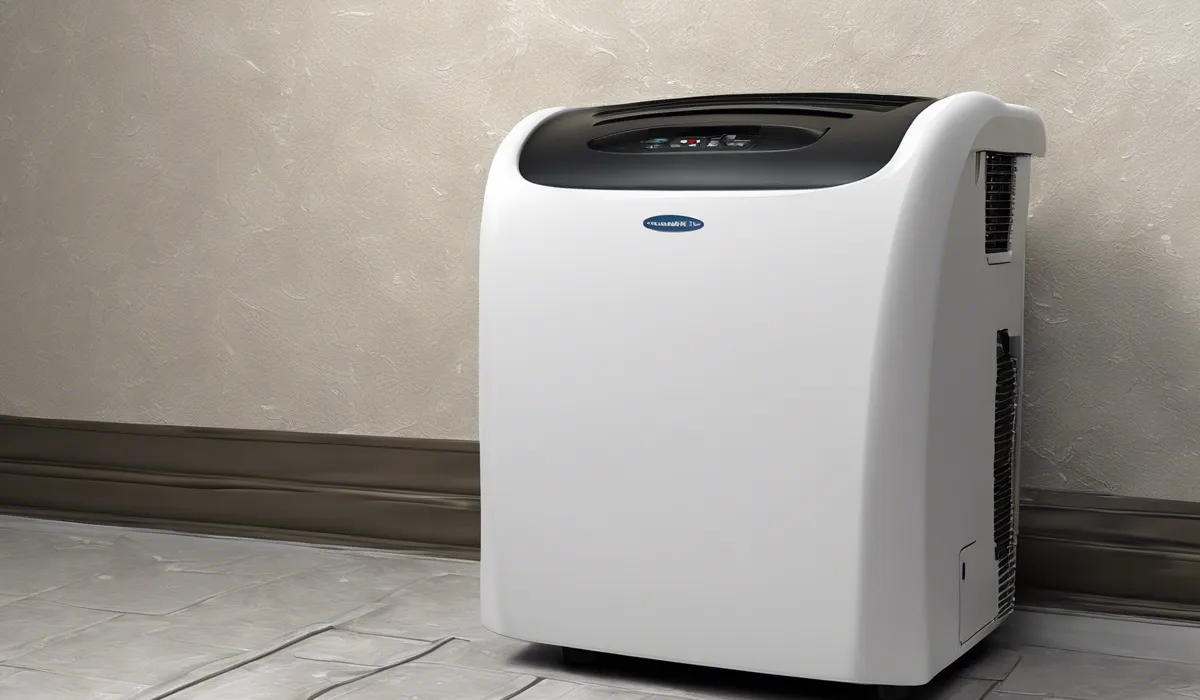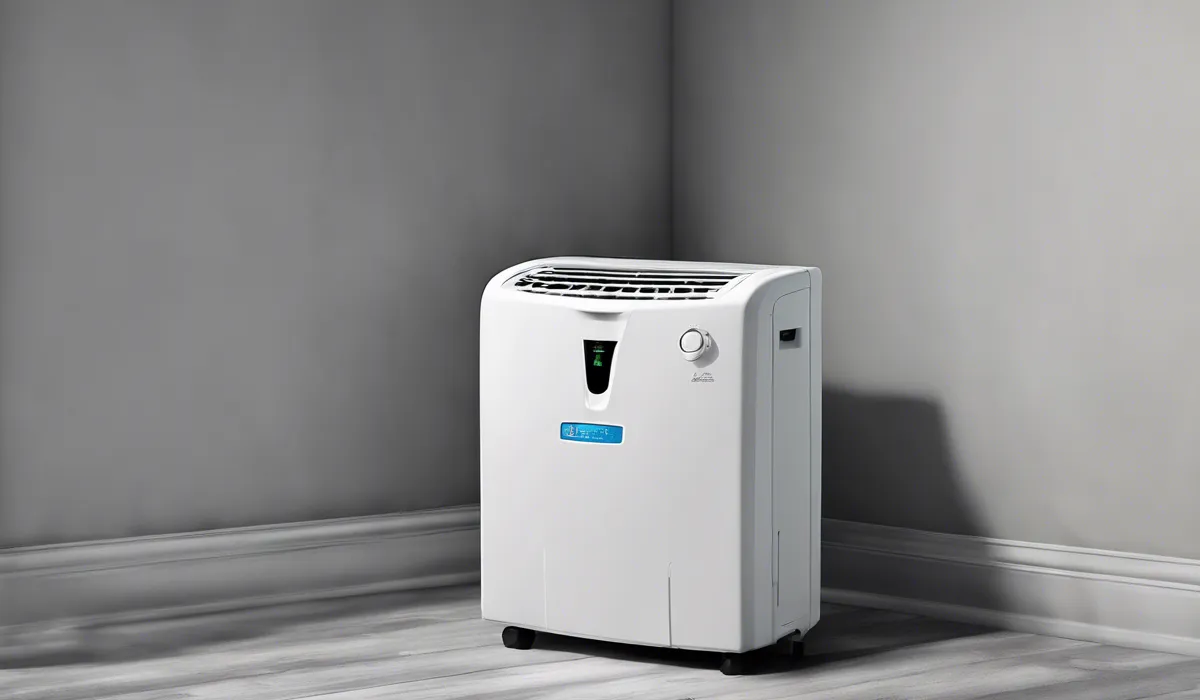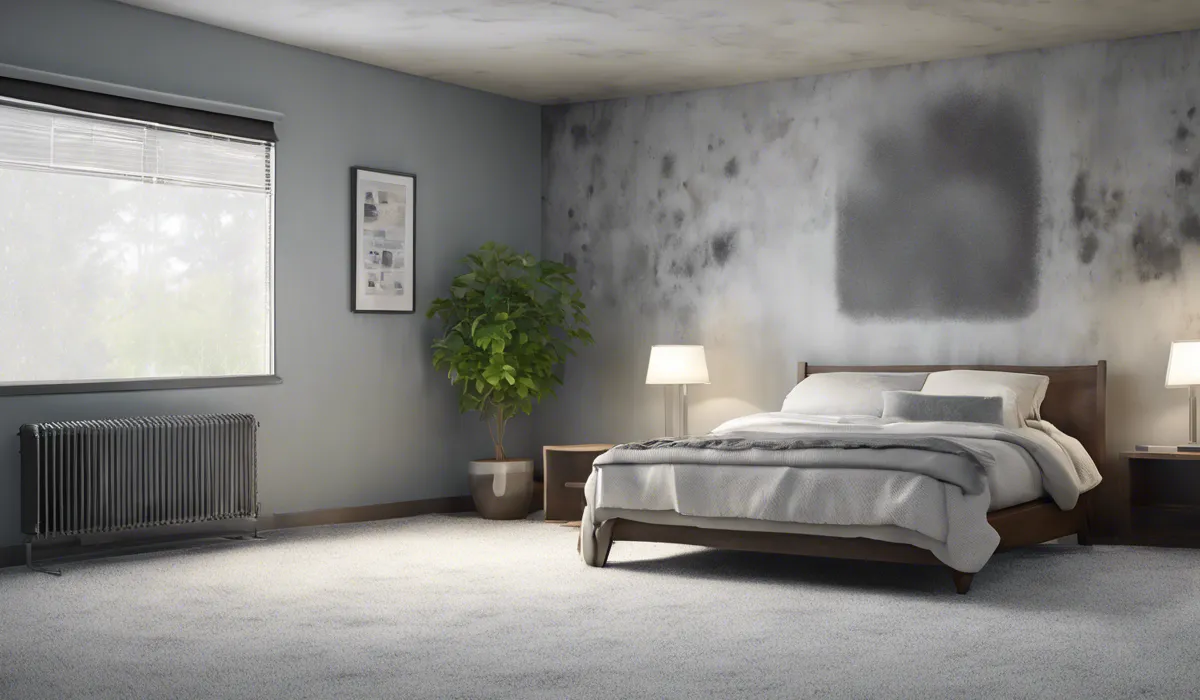To use a dehumidifier to eliminate mold, place it in the affected area, set the humidity level below 50% to inhibit mold growth, empty the collected water regularly, and clean the unit’s filter monthly for optimal performance.
Understanding Mold and Dehumidifiers

What Is Mold and Why Is It a Problem
Mold is a type of fungus that can grow indoors and outdoors, living on damp, warm, and humid environments. It reproduces through tiny spores that travel through the air.
When these spores land on a moist surface, mold can start to grow. Mold is a problem because it can cause health issues, such as allergies, asthma, and other respiratory problems.
It can also damage the surfaces it grows on, leading to costly repairs and reduced property value.
Ideal Conditions for Mold Growth
Mold thrives in environments with moisture, warmth, and a food source like wood, paper, or dirt.
The ideal conditions for mold growth include high humidity levels, typically above 60%, temperatures between 77 to 86°F, and poor ventilation, which traps moisture indoors.
These conditions are often found in basements, bathrooms, and kitchens, making them common places for mold to grow.
How Dehumidifiers Control Humidity Levels?
Dehumidifiers work by pulling in air from the room, removing the moisture, and then releasing the drier air back into the environment.
They do this by using a fan to draw air over cold coils, which causes the moisture in the air to condense into water.
This water is then collected in a tank or drained away. By removing excess moisture, dehumidifiers help maintain a less hospitable environment for mold.
The Role of Dehumidifiers in Preventing Mold Growth
Dehumidifiers are essential in the fight against mold because they tackle one of the key requirements for mold growth: moisture.
By keeping indoor humidity levels below 50%, dehumidifiers create an environment that is less conducive to mold proliferation.
This prevention strategy is particularly important in areas of the home that are susceptible to high humidity.
Choosing the Right Dehumidifier

Types of Dehumidifiers Available
There are several types of dehumidifiers, such as refrigerative, desiccant, and whole-house dehumidifiers.
Refrigerative models are most common for residential use, using a compressor to cool air and remove moisture.
Desiccant dehumidifiers use a moisture-absorbing material and are often quieter and more effective in colder temperatures.
Whole-house dehumidifiers are integrated into your home’s HVAC system, providing humidity control throughout the entire house.
Determining the Correct Size and Capacity
The size and capacity of the dehumidifier you need depend on the size of your space and the level of humidity.
Small units are suitable for single rooms, while larger units can handle bigger spaces or even an entire home.
The capacity is measured in pints of moisture removed per day. A hygrometer can help you assess the moisture level in your home to choose the right dehumidifier size.
Features to Look for in a Dehumidifier
When selecting a dehumidifier, look for features like adjustable humidity settings, a built-in hygrometer, automatic shut-off when the tank is full, and a continuous drainage option.
Some models also offer washable filters, multiple fan speeds, and digital displays for ease of use.
Energy Efficiency and Maintenance Considerations
Energy efficiency is important to reduce operating costs and environmental impact. Look for dehumidifiers with the ENERGY STAR label, which are more efficient than standard models.
Regular maintenance, such as cleaning the filter and emptying the tank, is essential to keep the dehumidifier working effectively and to prevent the growth of mold within the unit itself.
Best Practices for Using a Dehumidifier to Prevent Mold

Optimal Humidity Levels to Prevent Mold
To prevent mold growth, it is recommended to keep indoor humidity levels between 30% and 50%.
Utilizing a dehumidifier’s built-in hygrometer or an external one can help you monitor and maintain these levels effectively.
Placement and Positioning of the Dehumidifier
The dehumidifier should be placed in areas where humidity levels are highest or where mold is a concern, like basements or laundry rooms.
Ensure it is positioned away from walls and furniture for proper air circulation. The dehumidifier should also be accessible for easy maintenance.
Regular Maintenance Tips for Dehumidifiers
To ensure your dehumidifier runs efficiently, empty the water collection tank regularly and clean the air filter monthly.
Inspect the coils and fans for dirt and debris, which can impede performance. If your unit has a hose for continuous drainage, check it periodically to ensure it’s not clogged.
Additional Steps to Mitigate Mold Growth
Alongside using a dehumidifier, take additional steps to mitigate mold growth. Fix leaks promptly, ensure proper ventilation in high-moisture areas, and use mold-resistant products in your home.
Cleaning and disinfecting surfaces regularly can also help prevent the establishment and spread of mold.
Final Thoughts
To effectively combat mold with a dehumidifier, position it in the mold-prone area, adjust its settings to maintain a humidity below 50%, and ensure consistent maintenance.
This includes routinely emptying the water reservoir and performing monthly filter cleanings to ensure the dehumidifier operates efficiently and continues to help prevent mold proliferation.
